Notes
- 1 2 3 4 Cust, Lionel Henry (1892). . In Lee, Sidney (ed.). Dictionary of National Biography . 29. London: Smith, Elder & Co.
 This article incorporates text from this source, which is in the public domain .
This article incorporates text from this source, which is in the public domain .
John Ireland | |
|---|---|
| Died | November 1808 |
| Nationality | British |
John Ireland (died November 1808) was a British writer. [1]
He was born at the Trench Farm, near Wem in Shropshire; the house had been the birthplace and country house of William Wycherley, whose widow is said to have adopted him, but, dying without a will, to have left him unprovided for. His mother was daughter of the Rev. Thomas Holland, and granddaughter of Philip Henry. Ireland was first apprenticed to Isaac Wood, a watchmaker, of Shrewsbury. He afterwards practised as a watchmaker in Maiden Lane, London, and was a well-known member of the society that frequented the Three Feathers coffee-house, Leicester Fields. He published in 1785 a poem, The Emigrant, for which he apologised on the score of youth. He was a friend of John Henderson the actor, and in 1786 published Henderson's Letters and Poems, with Anecdotes of his Life, a book of some merit. [1]
Ireland was a great admirer and collector of the works of William Hogarth. In 1793 he was employed by John Boydell to edit a work on the lines of John Trusler's Hogarth Moralised, and called Hogarth Illustrated. The first two volumes were published in 1791, and reprinted in 1793 and 1806. Subsequently Ireland obtained from Mrs. Lewis, the executrix of Mrs. Hogarth, a number of manuscripts and sketches which had belonged to Hogarth, including the original manuscript of The Analysis of Beauty , and many autobiographical memoranda and sketches prepared by Hogarth himself in view of the publication of A History of the Arts. From this Ireland compiled a biography of the artist, which has been the foundation of all subsequent memoirs. It was published in 1798 as a supplementary volume to his Hogarth Illustrated, with Engravings from some hitherto unpublished Drawings. A second edition of the Supplement appeared in 1804; the whole work was reprinted in 1812. Ireland died in Birmingham in November 1808. [1]
His collection was sold by auction on 5 and 6 March 1810. A portrait of Ireland was engraved by Isaac Mills from a drawing by J. R. Smith, which was afterwards in the collection of John Bowyer Nichols. Another portrait, drawn by his friend J. H. Mortimer, was engraved by William Skelton for his Hogarth Illustrated; a copy of this by T. Tagg appeared in the later reprints. A portrait of him, drawn by R. Westall, R.A., is in the print room at the British Museum, where there is also a small drawing of him prefixed to a copy of the sale catalogue of his collection. He is sometimes stated to have been a print-seller, but, if this was the case, he does not appear to have concerned himself with other engravings than those by or after Hogarth. [1]
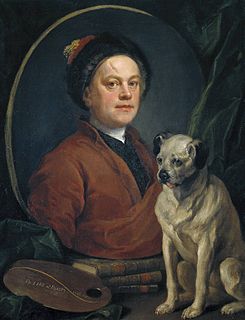
William Hogarth was an English painter, printmaker, pictorial satirist, social critic, and editorial cartoonist. His work ranges from realistic portraiture to comic strip-like series of pictures called "modern moral subjects", and he is perhaps best known for his series A Harlot's Progress, A Rake's Progress and Marriage A-la-Mode. Knowledge of his work is so pervasive that satirical political illustrations in this style are often referred to as "Hogarthian".

George Vertue was an English engraver and antiquary, whose notebooks on British art of the first half of the 18th century are a valuable source for the period.

Thomas Bewick was an English wood-engraver and natural history author. Early in his career he took on all kinds of work such as engraving cutlery, making the wood blocks for advertisements, and illustrating children's books. He gradually turned to illustrating, writing and publishing his own books, gaining an adult audience for the fine illustrations in A History of Quadrupeds.

John Leech was a British caricaturist and illustrator. He was best known for his work for Punch, a humorous magazine for a broad middle-class audience, combining verbal and graphic political satire with light social comedy. Leech catered to contemporary prejudices, such as anti-Americanism and antisemitism and supported acceptable social reforms. Leech's critical yet humorous cartoons on the Crimean War helped shape public attitudes toward heroism, warfare, and Britons' role in the world.
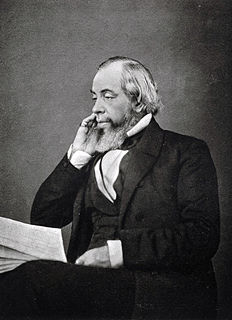
Benson John Lossing was a prolific and popular American historian, known best for his illustrated books on the American Revolution and American Civil War and features in Harper's Magazine. He was a charter trustee of Vassar College.

Joseph Strutt was an English engraver, artist, antiquary, and writer. He is today most significant as the earliest and "most important single figure in the investigation of the costume of the past", making him "an influential but totally neglected figure in the history of art in Britain", according to Sir Roy Strong.

The Shakespeare funerary monument is a memorial to William Shakespeare located inside Holy Trinity Church at Stratford-upon-Avon in Warwickshire, the church in which Shakespeare was baptised and where he was buried in the chancel two days after his death.

Henry Howard RA was an early 19th-century British portrait and history painter.
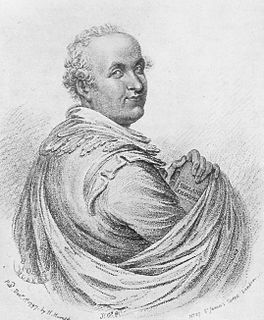
Samuel Ireland, English author and engraver, is best remembered today as the chief victim of the Ireland Shakespeare forgeries created by his son, William Henry Ireland.
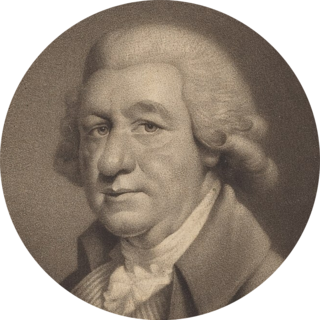
John Greenwood Sr. (1727–1792) was an early American portrait painter, engraver and auctioneer.
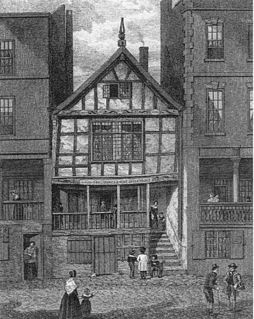
John Romney was an English artist in printmaking and watercolour who lived and worked in London and Chester. Much of his work consisted of reproductions of the work of other artists, but he produced some original prints, paintings and drawings. Like the great majority of contemporary printmakers he worked in both engraving and etching, often on the same plate, and descriptions of his prints as being in one or the other technique should be taken loosely. His best known original prints are series of views of the Chester area and his part of one on the antiquities in the British Museum. He was apparently not related to the famous portraitist George Romney (1734–1802).
Barak Longmate was an English genealogist and editor, heraldic engraver and publisher.

Edmund Thomas Parris was an English history, portrait, subject, and panorama painter, book illustrator, designer and art restorer. He was appointed history painter to Queen Adelaide, Queen Consort of William IV, and painted Queen Victoria's coronation in 1838 and the Duke of Wellington's funeral in 1852. He supervised the painting of the huge panorama in the London Colosseum in Regent's Park, London, and was the inventor of "Parris's medium".
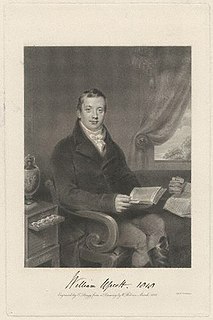
William Upcott (1779–1845) was an English librarian and antiquary.

Thomas Christopher Hofland (1777–1843) was an English artist and teacher.
Robert Johnson was an apprentice of Thomas Bewick in his Newcastle upon Tyne workshop. Bewick taught him wood-engraving, but discovered Johnson's talent for sketching in watercolour directly from nature.
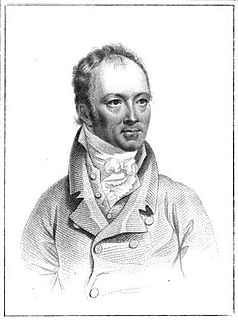
James Caulfield (1764–1826) was an English author and printseller, known also as a publisher and editor.
Henry James Richter (1772–1857), artist and philosopher, was born in Middlesex, possibly at 40 Great Newport Street, Soho, on 8 March 1772 and baptised at St Anne's Church, Soho, on 5 April at that same year.
John Russell Smith (1810–1894), known as Russell Smith, was an English bookseller and bibliographer. He is best known for his "Library of Old Authors" reprint series.

Jane Hogarth (c.1709–1789) was a British printseller and businesswoman who preserved the rights to the artwork of her husband, William Hogarth, following his death. She successfully continued to produce and sell his work for many years, working around the legal restrictions placed on women in her time.